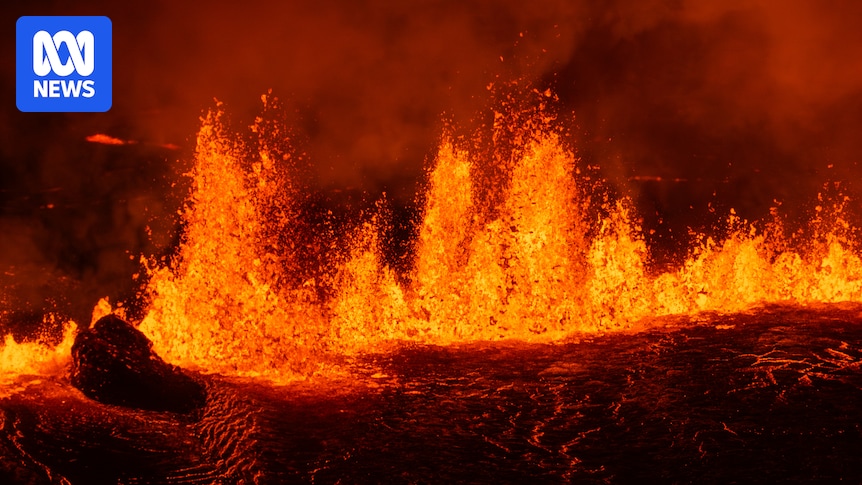A volcano near Iceland’s capital has erupted for the seventh time in a year, spewing fountains of lava and smoke, the country’s meteorological office said.
The eruption, which occurred on the Reykjanes Peninsula in south-western Iceland, also marks the volcano’s tenth in three years.
It kicked off at 11:14pm local time on Wednesday and created a fissure around three kilometres long but was estimated to be considerably smaller than a previous eruption in August, the meteorological office said.
The first signs of an eruption were recorded just 45 minutes before the massive ground fissure was opened by magma forcing its way through the earth’s crust.
While the eruption poses no threat to air travel, authorities warned of gas emissions across parts of the peninsula including the nearby town of Grindavík.
In a Facebook post, the office said the crack remained “the most active around its centre” while lava was spewing west and north of the volcano.
The western lava flow, moving at 300 metres per hour, had crossed the Grindavík road and approached the Njarðvíkuræð pipeline which services the area with hot water.
Lava spewed west and north of the volcano. (AP: Civil Protection in Iceland)
Icelandic town deserted after repeated volcanic activity
Authorities had previously warned of volcanic activity as magma accumulated beneath the Reykjanes Peninsula, where the most recent eruption ended only on September 6.
Repeated volcanic eruptions close to Grindavík — a town of 3,800 people about 50 kilometres south-west of the capital Reykjavik — have damaged infrastructure and property and forced many residents to relocate after the first evacuation orders came in December last year.
There was no indication that lava was flowing towards the town, but some 50 houses occupied by people who have returned were evacuated, the civil protection agency said in a statement.
Authorities had previously warned of volcanic activity as magma accumulated beneath the Reykjanes Peninsula. (AP: Marco di Marco)
“In the big picture, this is a bit smaller than the last eruption and the eruption that occurred in May,” said Magnús Tumi Guðmundsson, a professor of geophysics who flew over the eruption with the Civil Protection agency to monitor the eruption.
“Grindavík is not in danger as it looks and it is unlikely that this crack will get any longer, although nothing can be ruled out,” he said.
Eruptions to continue
After lying dormant for 800 years, the geological systems in the area reactivated in 2021 and have since erupted at rising frequency.
Experts have warned that Reykjanes is likely to experience repeated volcanic outbreaks for decades. (AP: Marco di Marco)
Experts have warned that Reykjanes is likely to experience repeated volcanic outbreaks for decades, possibly even centuries.
Iceland, which sits above a volcanic hot spot in the North Atlantic, averages one eruption every four to five years.
The most disruptive in recent times was the 2010 eruption of the Eyjafjallajokull volcano, which spewed clouds of ash into the atmosphere and disrupted trans-Atlantic air travel for months.
ABC/wires
